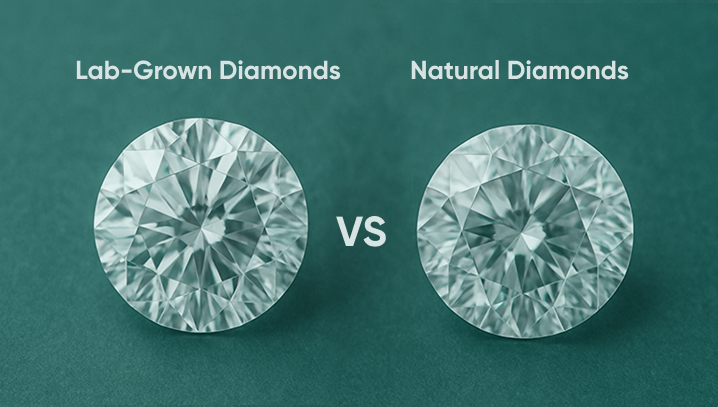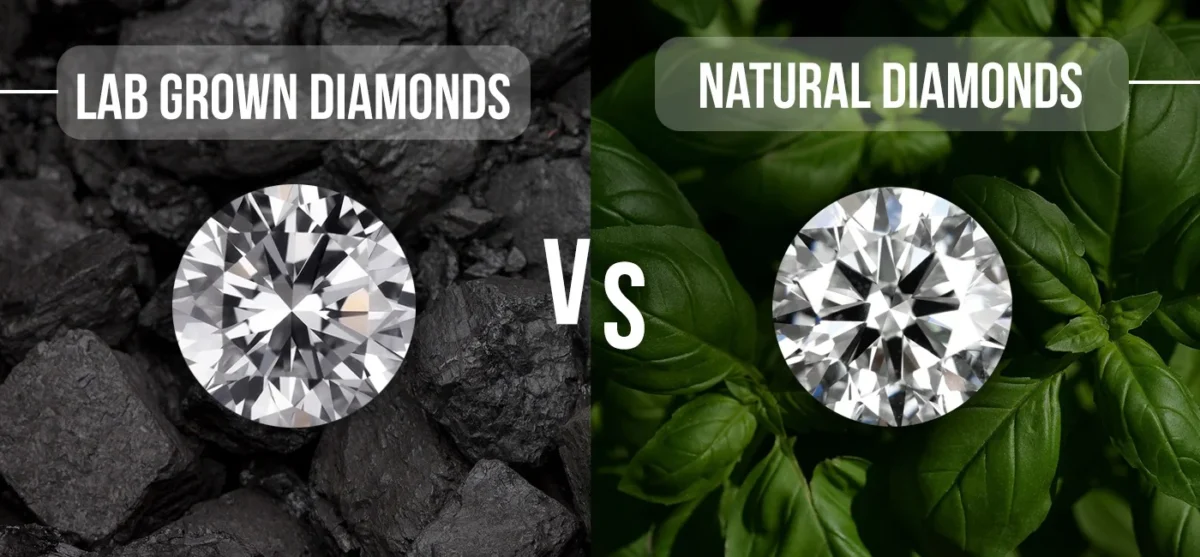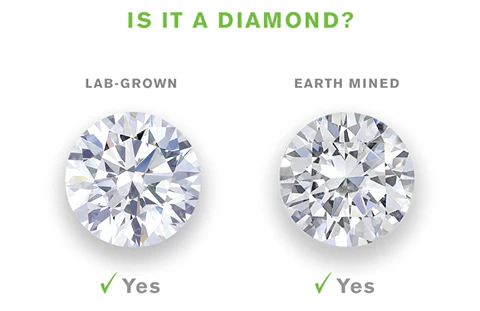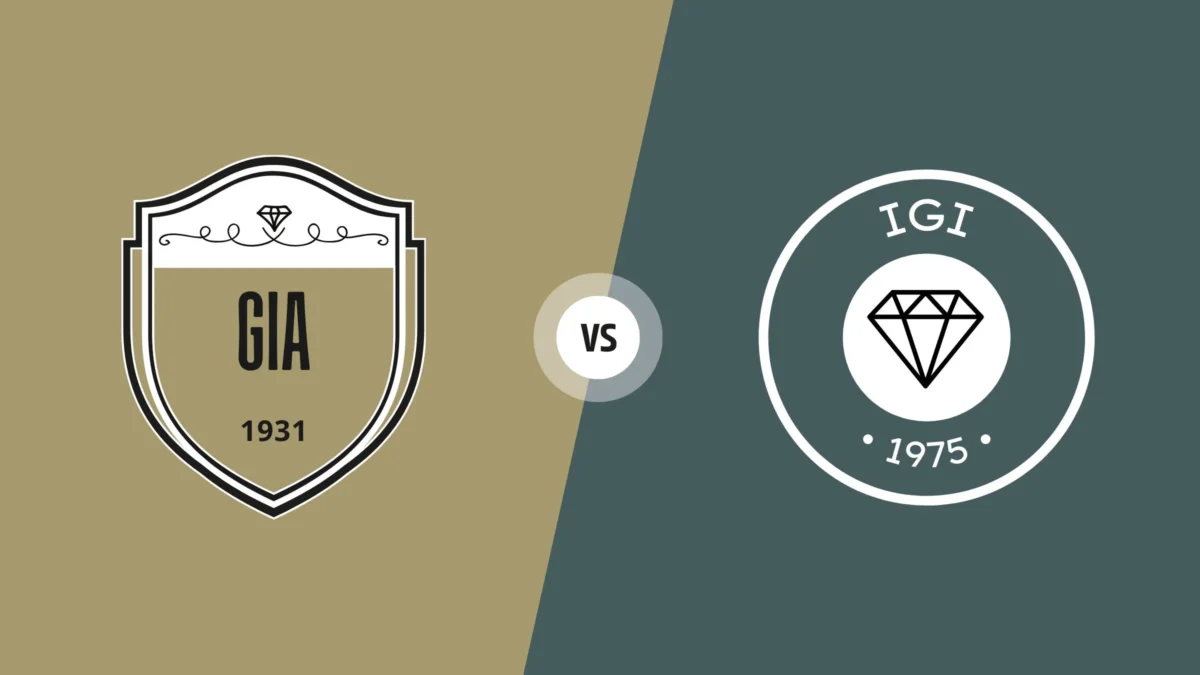Lab Grown vs Natural Diamonds: Which Should You Choose ?
The modern diamond market offers two stunning, yet distinct, choices: the traditional natural diamond, formed deep within the earth, and the technologically advanced lab-grown diamond, created in a controlled environment. While chemically and optically identical, differences in origin, price, and sustainability have made the choice between the two a central debate for jewelry buyers.
Our comprehensive guide, Lab-Grown vs. Natural Diamonds, delivers an objective diamond comparison, detailing the history, creation, market value, and ethical footprint of each gem. Learn which diamond choice – natural or lab-grown – best aligns with your budget, values, and desire for unparalleled brilliance.

Summery :
Every diamond tells a story – whether it’s born deep within the earth or created in a state of the art laboratory. Today, couples in India are increasingly asking the same question: Lab Grown vs Natural Diamonds – what’s right for me?
This guide takes you step by step through the journey of both diamonds, from their origin to the jewelry box, so you can choose with confidence.
What Do We Mean by Lab Grown vs Natural Diamonds ?

Both are real diamonds. Natural diamonds form over billions of years under the earth’s pressure. Lab grown diamonds are created in controlled environments using advanced technology that mimics the same conditions. The result: identical beauty, durability, and sparkle.
Setting into Jewelry
Here is where emotion meets design. Both lab grown and natural diamonds are set into engagement rings, pendants, and earrings. In India, solitaire diamond rings remain the timeless favorite for proposals, while halo rings are popular for weddings.
Lab grown stones allow couples to choose larger carat sizes at the same budget, making dream designs more accessible.
Cutting and Shaping
Once extracted or created, both diamonds move to expert cutters. Indian craftsmen, especially in Surat – the world’s diamond cutting hub – polish and shape stones into brilliant cuts.
Whether lab grown or mined, the artistry of cutting determines brilliance more than the origin of the stone.
Why it matters :
- Cut brings life and sparkle.
- Shapes like solitaire, halo, and princess cuts are equally possible for both.
- Certified craftsmanship ensures lasting value.
Origins - Earth vs. Lab
Natural diamonds are mined from deep underground, often in Africa, Russia, and Canada. Lab grown diamonds, on the other hand, begin as a tiny carbon seed placed inside a chamber that replicates the heat and pressure of the earth.
For couples in India seeking transparency, lab created diamonds offer the assurance of conflict-free origins.

Key Takeaways :
- Natural: billions of years old, mined from the earth.
- Lab grown: weeks to create, sustainable, and traceable.
- Both: chemically and visually identical.
Price and Value
Price is one of the biggest differences in the lab grown vs natural diamonds debate.
- Lab grown diamonds can cost 40–60% less than natural diamonds of similar size and quality.
- For Indian brides, this means a higher carat weight or premium setting within the same wedding budget.
- Natural diamonds hold stronger resale value, though lab grown pieces are gaining recognition as demand rises.
Ethics and Sustainability
More couples today want jewelry that reflects their values. Lab created diamonds are considered eco-friendly and conflict free, as they avoid the environmental challenges of mining.
Natural diamonds, when sourced responsibly, can also support mining communities. Certified stones with GIA or IGI grading provide reassurance.
Certification and Proof
Trust is essential. Whether you buy lab grown or natural diamonds, always ask for a certificate.

Look for :
- GIA or IGI reports confirming authenticity.
- Laser inscriptions on the girdle for traceability.
- Hallmarks on settings for gold or platinum purity.
Compare : Lab Grown Diamond vs Natural Diamond
When choosing between lab grown and natural, weigh your priorities:
- Budget: Lab grown offers cost advantage.
- Tradition: Natural diamonds carry heritage value.
- Ethics: Lab grown ensures conflict-free sourcing.
- Longevity: Both are equally durable, resistant to scratches and wear.
For some couples, lab grown diamond engagement rings balance modern values with affordability. For others, natural diamonds symbolize timeless legacy.
Caring for Your Diamond Jewelry
Regardless of origin, diamonds deserve proper care:
- Store pieces separately to avoid scratches.
- Clean with mild soap and a soft brush.
- Schedule annual professional polishing.
- Recheck settings before weddings or major events.
Mini FAQs
Are lab grown diamonds real like natural diamonds?
Yes, they are physically and chemically identical – only the origin differs.
How to tell lab grown vs natural diamonds apart?
Only specialized lab equipment can detect the difference, not the human eye.
Which is more affordable in India?
Lab grown diamonds are significantly more affordable, often 40–60% less.
Decision Framework for Couples
When deciding between lab grown vs natural diamonds, apply these checkpoints:
- Ethics: Do you prefer conflict-free, eco-friendly sourcing?
- Traceability: Do you value clear certification trails?
- Craftsmanship: Are you prioritizing artistry over origin?
- Lead Time: Do you need faster access to your perfect stone?
- Legacy: Is resale or heirloom value important to your family?
Trust and Assurance
At Primira Luxury, every diamond – lab grown or natural – is certified and hallmarked. With transparency in sourcing and artistry from India’s master cutters, couples can buy with confidence.
